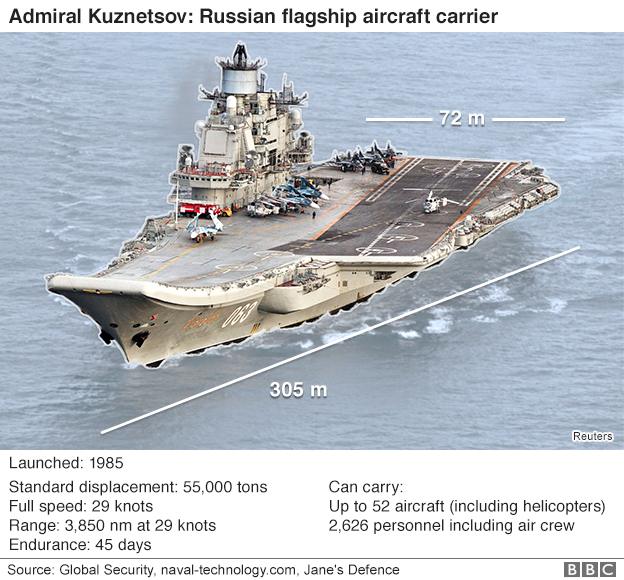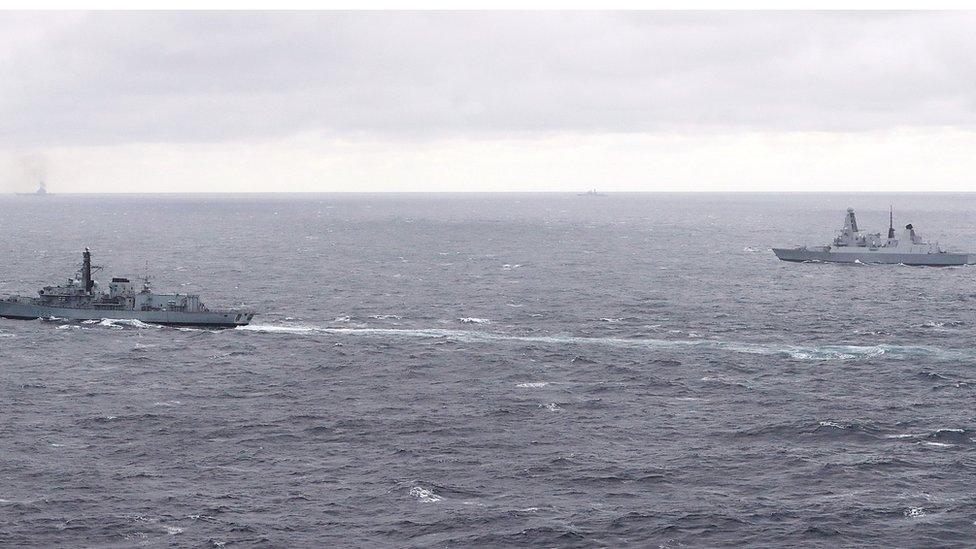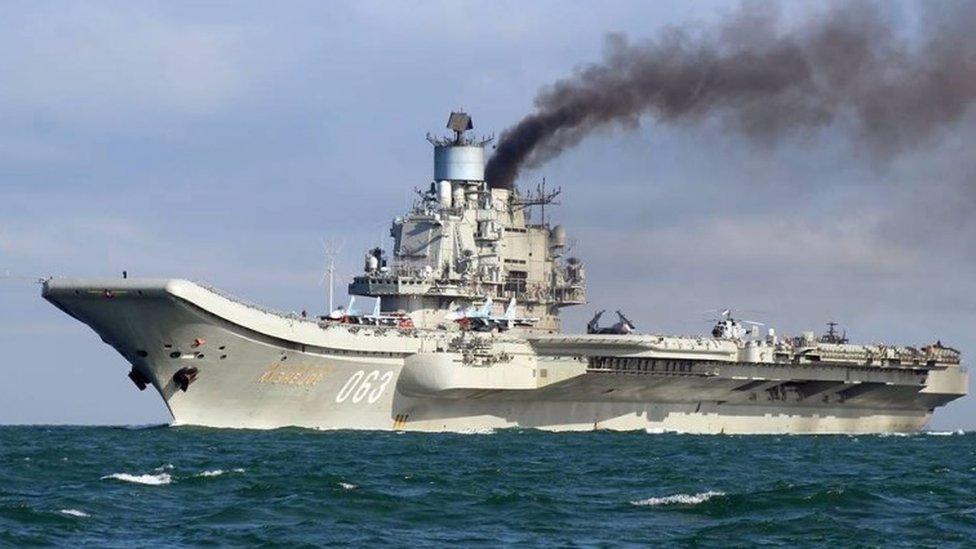UK warship escorts Russian carrier in English Channel
- Published
Aerial views of the Russian Kuznetsov carrier group transiting UK waters
A British warship and three RAF Typhoons will keep "a close eye" on a Russian aircraft carrier and other ships as they sail past the UK.
The carrier Admiral Kuznetsov and other Russian ships are passing through the English Channel on their way back to Russia from Syria.
A Royal Navy Type 23 frigate, HMS St Albans, was dispatched to meet it as it neared British waters.
The Ministry of Defence said the ships would be "escorted all the way".
Defence Secretary Michael Fallon said: "We will keep a close eye on the Admiral Kuznetsov as it skulks back to Russia; a ship of shame whose mission has only extended the suffering of the Syrian people.
"We are man-marking these vessels every step of the way around the UK as part of our steadfast commitment to keep Britain safe."
The Admiral Kuznetsov, the only carrier in the Russian navy, is being accompanied by a nuclear-powered Kirov-class battlecruiser - the Pyotr Velikiy, and a salvage tug.
The Kuznetsov carrier group passed through the Channel last autumn on its way to the Mediterranean.
It joined around 10 other ships off the coast of Syria during Russia's bombardment of what it said were anti-government rebels in Syria.
The Ministry of Defence said that at 12:30 GMT on Wednesday, the returning Russian ships were off the coast of Dover.
A Navy spokesman said the British craft were deployed to "provide reassurance to the nations which border the North Sea and English Channel".
He added: "Remaining at a respectful distance, but keeping the Russian warships clearly visible, Royal Navy sailors keep watch on every movement through their binoculars and use state-of-the-art radars to track the course and speed of the ships as they pass close to the UK."

Analysis
By BBC defence correspondent Jonathan Beale
NATO's Maritime Command (MARCOM), based in Northwood, London, has been monitoring the Admiral Kuznetsov task group as she returns home from operations in Syria.
The Royal Navy frigate HMS St Albans was waiting for the task group as soon as she approached UK waters. She'll continue to escort the Russian fleet as she skirts round Britain. It's normal for there to have been direct radio communication with the Russian warships to avoid any misunderstanding.
But both the Russian fleet and the Royal Navy frigate will also be quietly trying to gather intelligence on each other - listening out for radio communications and electronic signatures.
This is a routine operation. The Royal Navy has to escort a Russian warship near British waters several times a year. But this is more high profile given the Admiral Kuznetsov's military intervention in Syria. That's why RAF Typhoons have been sent up to reinforce the message.
While the Typhoons do not have any anti-ship missiles they can use their sensors to try to detect the Russian's air defence systems. But this is also an opportunity for the defence secretary to "shame" the Russian military over their recent actions in Syria.


Commander Chris Ansell, the commanding officer of HMS St Albans, said the task demonstrated the navy's commitments to protecting the UK's waters.
He said: "As an island nation, the security of the seas around our coastline is vital and this sort of task is routine business for HMS St Albans and the Royal Navy, which stands ready at all times to protect UK territorial waters."
- Published20 October 2016

- Published14 November 2016
